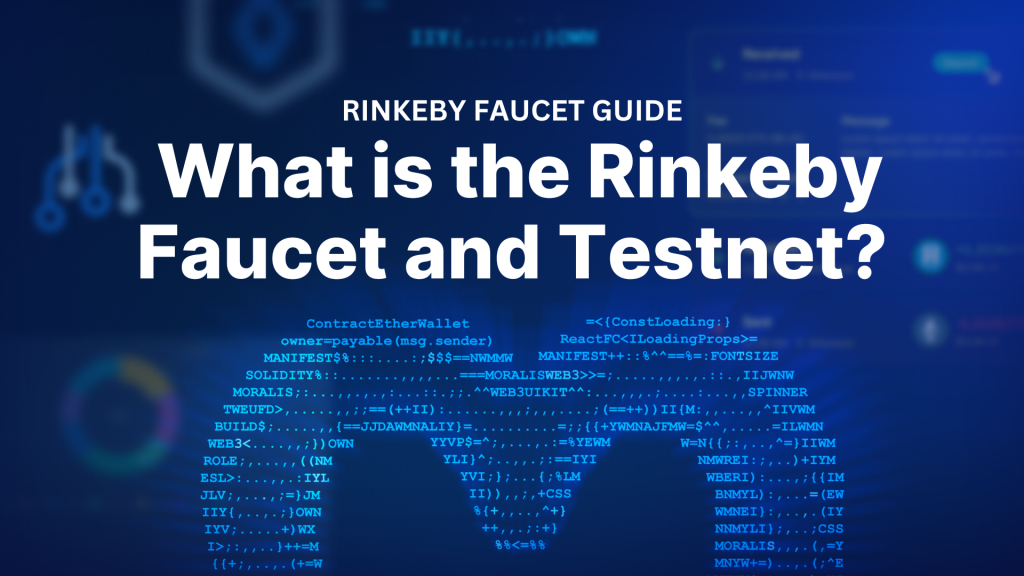
The Rinkeby testnet was a popular testnet network on Ethereum, and developers used the Rinkeby faucet to get testnet tokens to execute test transactions. Now, if you’ve been scouting the web for a Rinkeby faucet recently, odds are you haven’t found one, and there’s a good reason why that is. But before we explain why you haven’t been able to find one, make sure to check out the Rinkeby testnet faucet alternatives using the button below! Or, if you’d rather dive into the details regarding the faucet on Rinkeby, the Rinkeby testnet, alternatives to this network, and why you can’t currently find a reliable faucet for Rinkeby, read on!
Disclaimer: The Rinkeby testnet has been deprecated since October 5th, 2022. Therefore, we recommend using the Sepolia testnet with our Sepolia faucet or the Goerli testnet with our Goerli faucet.
Overview
In today’s article, you’ll first learn what the Rinkeby testnet is (was). We’ll also cover a brief history of this deprecated Ethereum testnet. Next, we’ll ensure you find out how a Rinkeby faucet fits into the “Rinkeby testnet” picture.
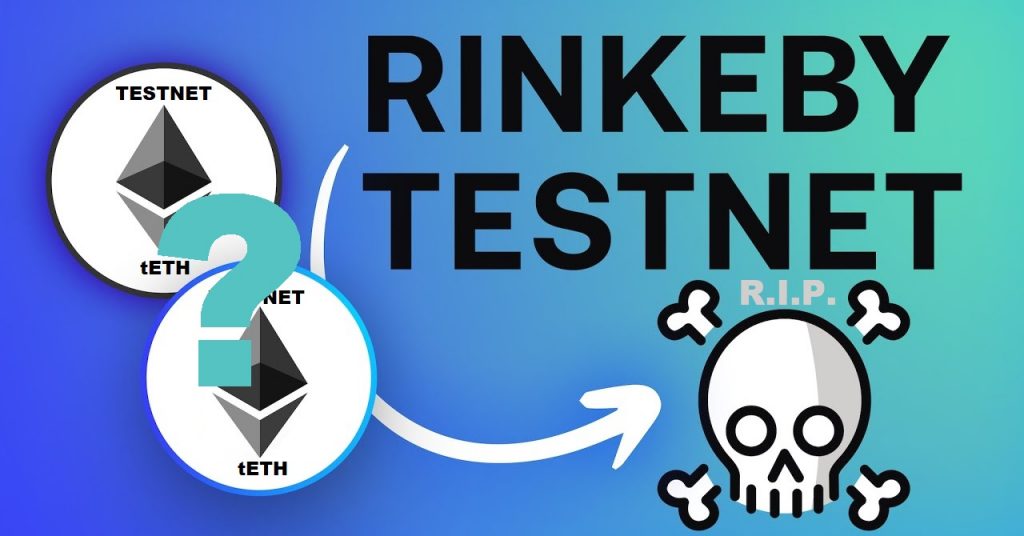
After examining the details regarding the Rinkeby faucet and the testnet network, you’ll be ready to move forward. As such, we’ll ensure you get acquainted with some Rinkeby alternatives. After all, if you are serious about building dapps (decentralized applications), you’ll always want to test them before taking them live.
What is the Rinkeby Testnet?
The Rinkeby testnet was an Ethereum testnet. However, this network dedicated to testing was deprecated on October 5th, 2022. Before its deprecation, the Rinkeby testnet – much like other Ethereum testnets – was primarily used by developers to test dapps before deploying them to the Ethereum mainnet.
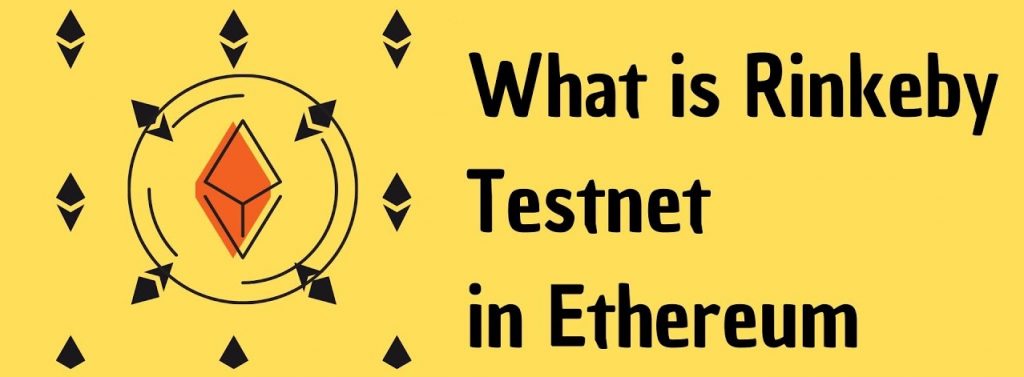
Alongside other Ethereum testnets, Rinkeby was an essential component of the Ethereum ecosystem. It served as a specialized blockchain network designed for testing and experimentation. It allowed developers to check the functionality and reliability of their smart contracts and dapps before taking mainnet launch on Ethereum.
Key Features of the Rinkeby Testnet
- Proof-of-Authority (PoA) Consensus Mechanism: One of the distinctive features of Rinkeby was its use of its PoA consensus mechanism. In PoA, pre-authorized nodes, rather than miners, validate transactions and create new blocks. This approach significantly improved network performance and thwarted spam attacks.
- Testnet Ether (tETH): To facilitate testing without risking real assets, the Rinkeby testnet provided free testnet ETH through a faucet known as the Rinkeby faucet. These testnet tokens, known as “testnet ETH” or “tETH”, held no monetary value and were used by developers to interact with the network for testing purposes. Users could request test ETH but were unable to mine it.
- Supported Node Clients: The Rinkeby testnet supported several Ethereum node clients, including Geth, Besu, Nethermind, and OpenEthereum. This compatibility allowed developers to choose their preferred client for interacting with the testnet.
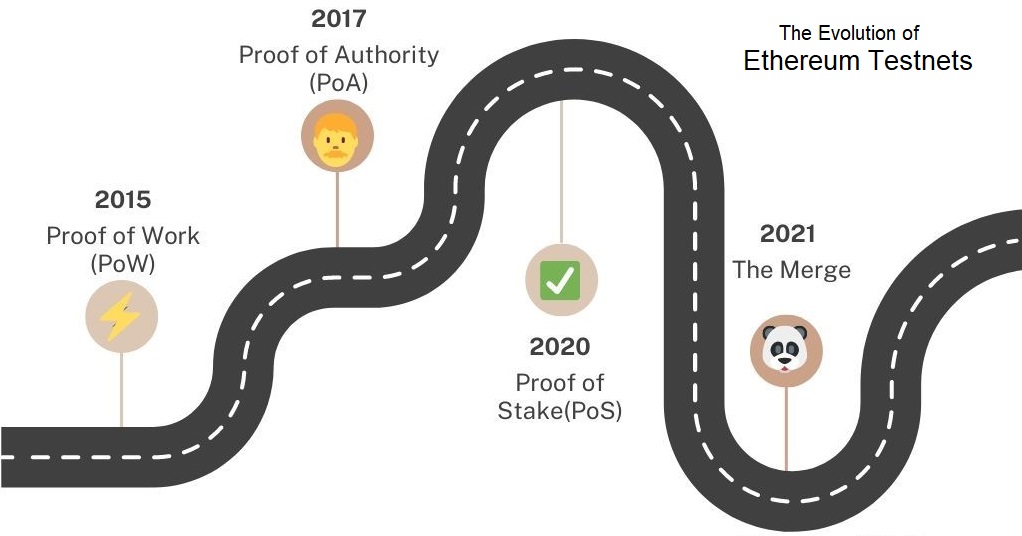
Brief History of the Rinkeby Testnet
The Rinkeby testnet was launched by the Ethereum team in 2017. The testnet introduced the concept of the PoA consensus model for testing purposes. Over its lifetime, Rinkeby accumulated approximately eleven million blocks and had around 50 million transactions as of 2021. It typically maintained 46 active nodes and had a block time of approximately 15 seconds, making it a relatively fast and efficient testnet.
With a gas price of about 1,000 gwei and an average network hash rate of 0.1 h/s, Rinkeby provided a high level of uptime with low page latency, making it attractive to developers.
However, despite its popularity, Rinkeby ceased to operate on October 5th, 2022. The reason behind this lies in Ethereum’s transition from a proof-of-work (PoW) to a proof-of-stake (PoS) consensus mechanism. So, the upgrade known as “The Ethereum Merge” determined the fate of Rinkeby. As the testnet stopped running, so did every Rinkeby faucet.

Rinkeby’s Pros and Cons
Developers often preferred Rinkeby over other testnets due to its faster block time. After all, it was significantly quicker than the Ropsten testnet. Another plus side of Rinkeby was its smaller chain data size, which required less storage space for running Ethereum nodes.
However, one drawback of Rinkeby was its PoA consensus model. The latter didn’t fully mirror the production environment back when the Ethereum mainnet was still utilizing a PoW consensus mechanism. In the production environment, miners had a financial incentive to maintain network security, and Rinkeby didn’t reflect that aspect.
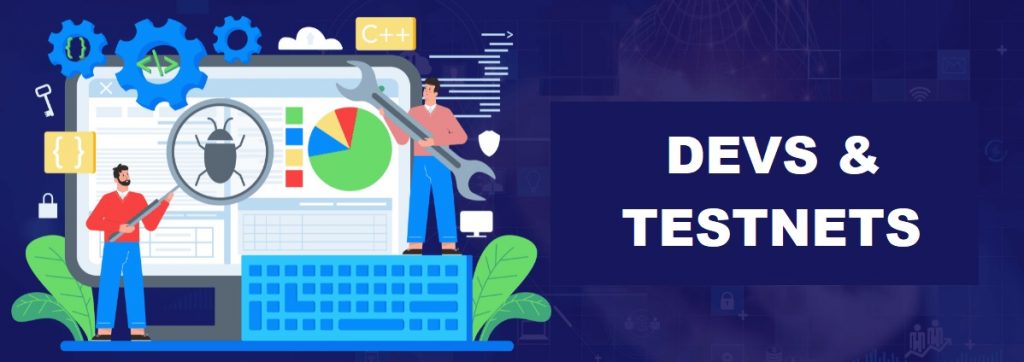
How Developers Used Rinkeby
Developers employed the Rinkeby testnet for various purposes:
- Testing Applications: The primary use case was for developers to rigorously test their decentralized applications. Rinkeby offered a controlled testing environment similar to the Ethereum mainnet, enabling developers to assess smart contract functionality and application features without financial risk.
- Educational Tool: Rinkeby served as an educational resource, allowing developers to learn and experiment with Ethereum technology without the consequences of real-world financial losses.
- Platform Upgrades: Developers also used Rinkeby to test upgrades and enhancements to the underlying Ethereum platform. This helped refine developer tools, enhance documentation, and provide critical feedback for the Web3 ecosystem.
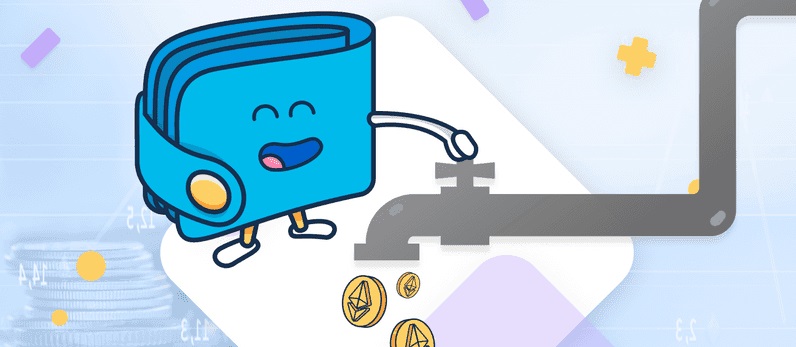
What is a Rinkeby Faucet?
A Rinkeby faucet was a vital resource for developers and users in the Ethereum ecosystem, specifically tailored for the Rinkeby testnet. This faucet served as a source of test ether (tETH) for those looking to experiment with Rinkeby’s blockchain capabilities.
In essence, every Rinkeby faucet was a distribution system for Rinkeby’s test ETH. As pointed out previously, tETH held no real-world monetary value. However, it did allow users and developers to request test ETH tokens for free. That enabled them to interact with the Rinkeby testnet without the fear of incurring actual financial losses.
How the Rinkeby Faucet Worked
The following three steps cover the gist of how a typical Rinkeby faucet worked and how existing testnet faucets continue to operate:
- Requesting Test ETH: Users visited the Rinkeby faucet website and requested a specific amount of test ETH. These requests were usually capped to prevent abuse and ensure equitable distribution.
- Fulfilling of Requests: The faucet processed the requests and sent the requested amount of test ETH to the user’s Rinkeby address. This allowed users to simulate transactions and interactions on the Rinkeby testnet without spending actual cryptocurrency.
- Using Test Tokens in Development and Testing: Developers commonly used the test ETH obtained from the Rinkeby faucet to test smart contracts, experiment with decentralized applications, and ensure the functionality of their code on the Rinkeby testnet. It served as a critical resource for fine-tuning applications before deploying them on the Ethereum mainnet.
Rinkeby Faucet Offline?
Since the Rinkeby network is deprecated, most Rinkeby faucets won’t work anymore. After all, there’s no need for developers to even get Rinkeby testnet funds, as the testnet can no longer serve their needs. Fortunately, there are other good Ethereum testnet faucet alternatives available.
Rinkeby Faucet Alternatives
If your goal is to focus on Ethereum testnets when developing dapps, you can use Sepolia or Goerli. The first one was created with a specific intention to serve post-Ethereum Merge. And the second one included updated mechanics to best serve Ethereum testing. If you wish to learn more about the two active Ethereum testnets, check out the subsections below.
Every testnet has its designated faucet, but there can also be multiple faucets serving a specific testnet. As such, it can sometimes be rather tricky to find a reliable faucet. And unfortunately, some websites claiming to offer faucets are, in fact, scams. Also, others want you to sign up or provide your personal data in return for test tokens.
Due to these challenges, we decided to help developers get their hands on test crypto with minimum fuss. Therefore, we created a list of curated testnet faucets, a.k.a. “pure faucets”. These crypto faucets await you on the following Moralis page:
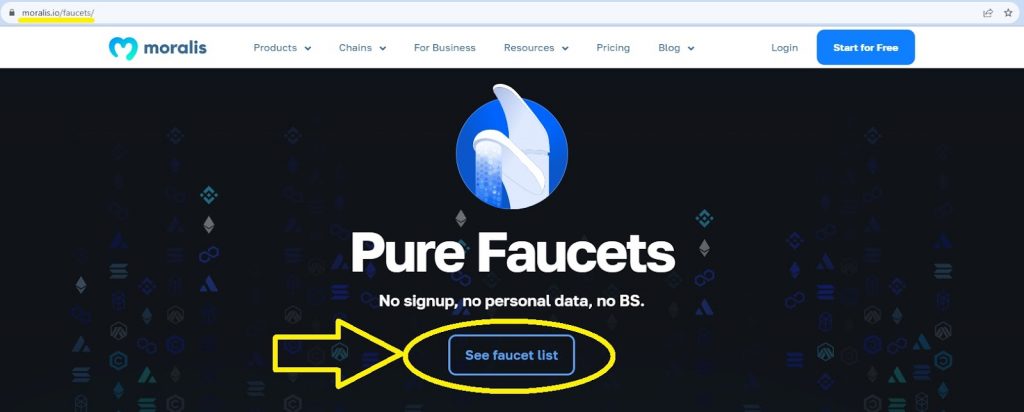
Pure Faucets – Your Gateway to Testnet Crypto
As indicated in the above image, once on the Pure Faucets page, you just need to hit the “See faucet list” or scroll down the page. By doing so, you’ll be able to see all available testnet faucets.
As far as the Rinkeby faucet alternatives for Ethereum go, the Sepolia and Goerli faucets are your two options. However, if you wish to deploy dapps on other programmable blockchains, you have several other alternatives to choose from.
We are constantly updating our list of curated testnet faucets and adding new ones. But at the time of writing, the list includes the following options:
- Goerli Faucet
- Sepolia Faucet
- Polygon Mumbai Faucet
- BNB Testnet Faucet
- Avalanche Fuji Testnet Faucet
- Chainlink Testnet Faucet
- Solana Testnet Faucet
- Fantom Testnet Faucet
- Optimism Goerli Faucet
- Aptos Testnet Faucet
- Arbitrum Goerli Faucet
- Oasis Network Testnet Faucet
To use any of the above-listed testnet faucets, visit the Pure Faucets page, hit the “See faucet list”, and click on the “Try Now” button next to the faucet you wish to focus on.
Active Rinkeby Testnet Alternatives
You already know that the two active Rinkeby testnet alternatives are Sepolia and Goerli. Each of the two options has its pros and cons. As such, we recommend you learn more about these testnets in our two articles about the Goerli testnet and Sepolia testnet.
However, you can learn the gist of each of these testnets below. That should be enough to help you decide which one may be a better fit for your needs.
Goerli Testnet Overview
The Goerli testnet, sometimes called Görli, stands as one of Ethereum’s most prominent and enduring testnets. It was first introduced in September 2018 and gained official recognition during the GörliCon event in Berlin in early 2019.
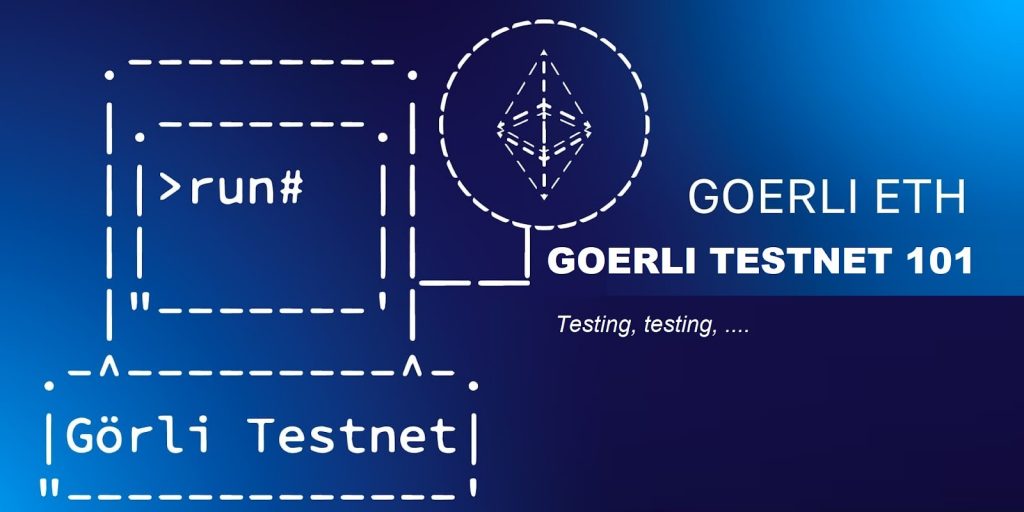
What makes Goerli particularly significant is its resilience and ongoing maintenance within the Ethereum community, a status many other testnets failed to obtain. Furthermore, Goerli started as a PoA network, with validators required to disclose their real-world identities. However, The Merge forced Goerli to undergo a transition to PoS. It did so in two phases – first with an upgrade called Bellatrix and later by merging with Prater Beacon Chain’s testnet.
Goerli’s cross-client compatibility sets it apart. Unlike other testnets, it supports a range of node software, including Geth, Parity, Hyperledger, Nethermind, and more. This fosters a harmonious development environment. Moreover, this cross-client support streamlines Ethereum development and ensures that tools and applications perform consistently across various programming languages.
Sepolia Testnet Overview
The Sepolia testnet emerged as one of Ethereum’s primary PoS testnets in October 2021. Unlike many other testnets, Sepolia has avoided being shut down. It continues to enjoy active maintenance from client developers. This makes Sepolia a reliable and accurate testing environment for Ethereum projects.
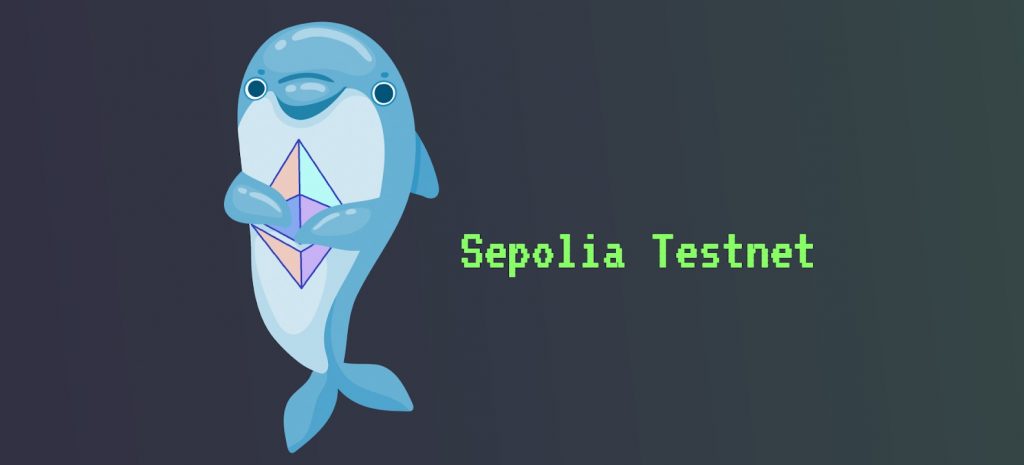
Initially, Sepolia operated with a PoW consensus mechanism. However, it aligned with Ethereum’s mainnet during The Merge, adopting a PoS consensus mechanism via Beacon Chain. This transition effectively transformed Sepolia into a precise simulation of the Ethereum mainnet. Hence, the network is now ideal for testing smart contracts and decentralized applications in a realistic context.
Goerli vs. Sepolia Breakdown
- Goerli, introduced in September 2018, is one of the earlier Ethereum testnets, while Sepolia made its debut in October 2021.
- Goerli initially implemented a PoA consensus mechanism, requiring validators to disclose real-world identities. However, Sepolia used a permissioned validator set for PoW consensus.
- Goerli’s transition to PoS occurred in two phases, while Sepolia’s transition happened in a single phase as part of The Merge.
- Sepolia’s history and state are relatively small, leading to quick sync times and less storage requirement for running nodes. Goerli, with its larger state, is suitable for testing complex smart contracts but demands longer syncs and more storage.
- Goerli has an open validator set, making it accessible for stakers to test protocol upgrades. On the other hand, Sepolia uses a closed validator set, focusing on dapp development.

Rinkeby Faucet Explained – What is the Rinkeby Faucet and Testnet? – Summary
The Rinkeby testnet and all its faucets are no longer active. As such, you ought to focus on available alternatives. If you wish to test dapps for launch on Ethereum, the Sepolia and Goerli testnets are your two options.
No matter what network you decide to focus on, make sure to never forget to test your smart contracts and dapps before launching them to the respective mainnet. Furthermore, to be able to execute those tests, you will need some testnet tokens. This is where Rinkeby faucet alternatives enter the scene! So, to choose among reliable testnet faucets, visit Moralis’ Pure Faucets page and select the faucet you need.
Also, make sure to check out Moralis’ Web3 API fleet. After all, these powerful shortcuts can help you save a ton of time and resources when building dapps!
We also recommend checking out the Moralis blog and the Moralis YouTube channel, where you can learn more about Web3 development. Or, you can dive straight into Moralis’ documentation and start BUIDLing!
